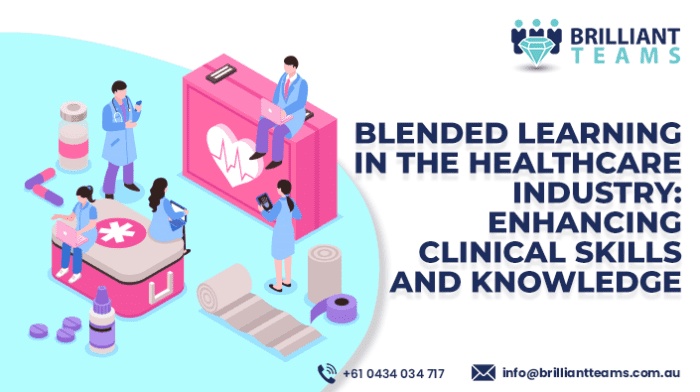Blended learning has gained significant traction in the healthcare industry as a powerful tool for enhancing clinical skills and knowledge among healthcare professionals.
In the rapidly evolving healthcare industry, staying updated with the latest clinical skills and knowledge is crucial for professionals. Blended learning has emerged as an innovative approach that combines traditional classroom instruction with online learning platforms, offering a comprehensive and flexible learning experience.
Blended learning in the healthcare industry is revolutionising the way medical professionals enhance their clinical skills and knowledge, ensuring they provide the best possible care to patients.
In this article, we will learn what is blended learning, the evolution of healthcare education, benefits, challenges, and implementation strategies of blended learning in the healthcare sector.
1.The Evolution of Healthcare Education
Over the years, healthcare education has evolved to meet the changing needs of the industry. Traditional methods of learning, such as lectures and textbooks, have been the foundation of medical education.
While these methods are valuable, they often lack interactivity and real-world application. With advancements in technology, the healthcare industry has witnessed a shift toward more dynamic and interactive learning approaches.
Blended learning has emerged as a solution that combines the best of both traditional and modern educational methods. It incorporates face-to-face instruction, practical hands-on training, and online learning resources to create a well-rounded educational experience for healthcare professionals.
2. Understanding Blended Learning
Blended learning, also known as hybrid learning or mixed-mode learning, is an educational model that combines different modes of learning to create a comprehensive and personalised learning experience.
It integrates traditional classroom instruction, which involves direct interaction between teachers and students, with online learning tools and resources. The purpose is to leverage the strengths of both approaches, enhancing the learning process and meeting the diverse needs of learners.
In a blended learning environment, students engage in a variety of activities, such as attending face-to-face lectures, participating in group discussions, collaborating on projects, completing online modules, and accessing digital resources.
The balance between in-person and online activities may vary depending on the specific course or program. The online component can include multimedia materials, interactive exercises, discussion forums, and virtual simulations, providing students with opportunities for self-paced learning and active participation.
More Info


No comments yet